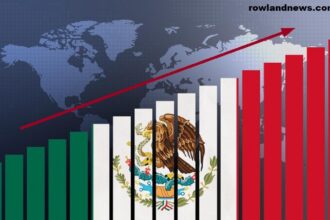There have been times when we’ve had those moments. You might have read a newspaper article about a rally in the market. Maybe a close friend boasted about having their savings doubled for shares. And then the idea hits you: “Is now the right time to invest in the share market?”
This is a problem that affects both novice and experienced investors. Truth? There’s no universal answer. However, with the right advice, timing, and mental attitude, it is possible to make an informed choice that aligns with your financial goals.
In this comprehensive guide, we’ll walk you through everything you need to know about timing the market and trends in the present, as well as historical information, and when it might be the right time to invest in the market or simply sit back and watch.
Understanding the Share Market: The Basics
Before you dive into the subject of market timing, it is important to comprehend what the actual meaning of the market is. The market for shares (or the stock market) is a marketplace that allows investors to buy and sell shares of publicly traded corporations. The market reflects the sentiment of investors, as well as economic indicators, political developments, interest rates, and the performance of companies.
The most important elements to be aware of:
- Bull Market: Prices are climbing and investors are hopeful.
- Bear Market: Prices are declining, and investor confidence is at an all-time low.
- Volatility: The sudden up and down movements in price.
- Corrections, characterized by short-term drops of more than 10%, are typically healthy resets within an expanding market.
The markets are multi-directional, and therefore, fluctuations are normal and sometimes necessary. Knowing how to navigate the market’s cycles is what distinguishes the intelligent investor from one who is impulsive.
Is There Ever a “Perfect” Time to Invest?
Let’s take this off the way. Waiting for the ideal time to make investments is an untruth.
If you’re always waiting to see a “perfect” dip or “guaranteed” market rally, you might be missing out on significant positive long-term returns. Then again, Warren Buffett, one of the top investors around the globe, is quoted as saying:
“The most profitable time to invest was yesterday. Second-best is now.”
The challenge of predicting market movements precisely is notoriously difficult. Most financial specialists advise taking your time on markets–meaning that the longer an investment is in place, the more likely you are for growth and compounding.
Current Market Overview: What’s Happening Now?
Since mid-2025, the global markets have fluctuated in response to a range of macroeconomic influences:
- Changes in interest rates from major central banks
- Inflation is easing, yet it is higher than normal levels
- AI-driven tech booms are boosting specific sectors
- Geopolitical considerations that include regional conflict and trade relations
In India, particularly, the Nifty 50 and the Sensex have had a strong year during the last 12 months and sectors such as infrastructure, banking, as well as IT are showing robustness.
According to Bloomberg, Indian equities are expected to be among the most profitable emerging markets by 2025.
Does that mean it’s the right time to put money into it? Let’s look at it further.
How to Know If It’s the Right Time For You to Invest
Making investments in the market doesn’t revolve around trend charts or trends’s about your situation.
1. Your Financial Goals
You can ask yourself:
- Are you putting aside money to fund your retirement, buying a home or short-term wealth accumulation?
- Are you in need of cash over the next six-to-12 months? If yes, then shares may not be the best option for you.
If you’re goal for your investment is longer-term (3-plus years) and short-term volatility isn’t a concern, it shouldn’t be a cause for concern.
2. Emergency Fund Status
Before you invest, be sure you’ve a well-funded emergency account, generally covering 3 to 6 months’ expenditures. You may also be tempted to pull from your savings too soon in the event of an economic downturn or personal crisis.
3. Debt Situation
Credit with high interest rates (such as personal or credit card loans) must be paid off before investing aggressively. The savings on interest can be higher than the possible yields.
What the Data Says: Investing in All Market Conditions
Dollar-Cost Averaging Works
Research has shown that making a consistent investment for an extended period of time , regardless of the market’s conditions, will yield higher returns on average.
This method is referred to as “DOL-cost Averaging (DCA): you put aside a set amount of money regularly (e.g. every month, or even each month) and spread the cost of your purchases across the highs and lows.
A study by NerdWallet confirms DCA lowers the chance of investing in a lump amount at the wrong time.
Time in the Market Beats Timing the Market
The data provided by Fidelity indicates that not focusing on the 10 most profitable trading days in a decade could significantly lower the returns. The most profitable and least favorable days tend to be grouped; therefore, being invested is crucial.
What Are Experts Saying in 2025?
Analysts and market analysts for 2025 are recommending cautious optimism. Even though markets across the globe remain volatile, growth in earnings remains high in specific sectors such as:
- Technology (AI, semiconductor)
- Green energy
- Financial and banking services
India, in particular, is benefiting from an increase in domestic demand, as well as a steady government policy, and increased interest in global manufacturing under the “China+1” strategy.
However, confident analysts are warning that the valuations of specific sectors of the economy, such as technology, could become overvalued. This is why investing with diversification is vital.
Real-World Example: Meera’s Investment Journey
Meera, 29, an engineer working in software engineering from Pune, began investing in 2020, following the COVID-19 market crash. She started with a monthly investment of Rs 5,000 to invest in the Nifty 50 Index Fund. In time, she also added SIPs into mutual funds as well as direct equity investments in banks as well as IT-related stocks.
When the market dropped again in 2022, she continued investing. In 2025, her portfolio was growing to more than eighty percent despite two significant market crashes.
What did she do that worked?
- Be consistent
- Beware of panic in crashes
- Diversifying across industries
- Looking long-term
Read Also: How to Sell Shares on Robinhood: A Complete Guide for Beginners
When You Might Want to Wait
While the longer-term outlook for the markets is optimistic, there are scenarios in which adjusting or pausing is logical:
- Expect to pay a significant expenditure within the next few months (e.g. wedding, mortgage down payment)
- It’s money you cannot afford to lose.
- It’s not clear exactly what you’re putting your money into
In these instances, you can wait or conduct more study, or make a more cautious investment (e.g. by investing in hybrid or fixed income funds).
Tips to Get Started Safely
1. Start Small and Learn
It doesn’t require a lot of money to get started. A monthly investment of just Rs500 for an ETF or SIP could get things moving.
2. Diversify Your Portfolio
Do not invest your entire savings in a single sector or stock. Look into mutual funds, index funds or ETFs to spread risk.
3. Use a Reliable Platform
Use SEBI-registered brokers only, and select applications with excellent reviews and a transparent approach. Some examples include Zerodha, Groww, Upstox and Paytm Money.
4. Stay Educated
Read blogs on topics like Moneycontrol, Economic Times Markets and even the free classes offered from NSE India to build your understanding.
Conclusion: So, Is It the Right Time to Invest?
Most of the time, yes — is the perfect moment to invest if you’re looking long-term and pursuing it with a plan.
The challenge of predicting the market perfectly is risky. However, beginning small, remaining steady, and maintaining a long-term view has proven to be an adequate strategy time and again.
The market is likely to fluctuate, then recover and increase again, as that’s its natural tendency. Your job is to be able to navigate the waves with confidence and not be afraid of it.
Ready to Take the First Step?
If you’ve been in limbo, now is a great moment to start investing wisely. Start with the amount you can afford, then learn about your options and let the money work for you over time.
Do you have questions or are you looking for an investment guide for beginners? Please let us know. We’be happy to assist you in your quest towards financial independence.














